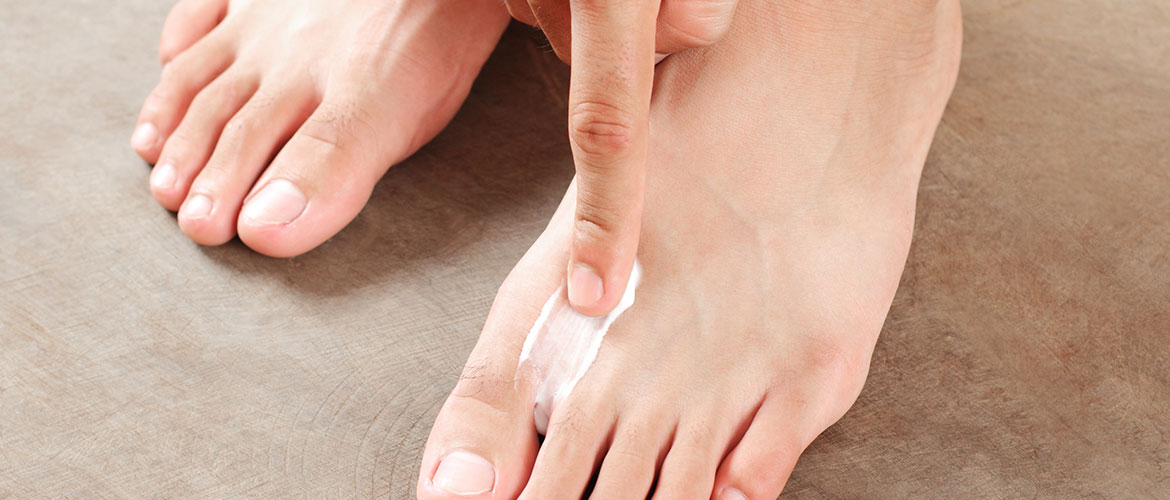Athlete’s Foot is an annoying problem and one that isn’t a huge health risk but can be terribly irritating and uncomfortable. As with all fungal infections, prevention is your best bet. We show you how to prevent Athlete’s Foot, avoid recurrent infections, and treat the problem if you do catch it.
What Is Athlete’s Foot?
Athlete’s Foot is a kind of fungal infection that affects the skin on your feet, often beginning with the area between your toes where the skin tends to be more moist or sweaty. The symptoms of this infection are a scaly rash that may be itchy or even feel like it is stinging.
How To Prevent Athlete’s Foot
Athlete’s Foot tends to pass from person to person through the use of shared equipment, clothing, or direct contact. It may also spread through surfaces like locker room floors where you and the infected person are walking barefoot. Dermatologists suggest some simple precautions that can help you avoid getting Athlete’s Foot:
- Never go barefoot in areas where other people may also have been barefoot. That means the swimming pool, its changing rooms, showers at work or the gym, and even hotel rooms.
- If you share a home with someone else, ensure you keep all surfaces/floors well cleaned.
- In warm weather, try and stick to open sandals and footwear that allows your feet to air and stay dry.
- Never share towels, clothing, yoga mats, rugs, and shoes/socks with anyone else, especially if they have a fungal infection.
- Avoid shoes made of synthetic materials like plastic or rubber as these cause your feet to sweat more.
- Wear shoes that are the right size for you and not tight fitting.
- Don’t wear the same pair of shoes more than one day at a time. Alternate them with another pair to allow the first pair to dry out well before being used again.
- Use socks that are made from natural fibers like cotton. These will dry out well and allow air to circulate to your feet.
- Ensure your feet are always nice and dry. If they get wet or sweaty, wash and dry them, and change to a fresh pair of socks/shoes.
- Wash your feet with soap and not just plain water, at least once a day.
- After a bath or washing your feet, take care to dry them thoroughly – particularly between the toes.
- If you feel you are prone to getting Athlete’s Foot, use a good dusting powder on your feet to avoid the problem.
How To Treat Athlete’s Foot
Even with your best efforts, sometimes, you may just wind up catching a fungal infection. If you develop Athlete’s Foot, don’t worry too much. This fungal skin infection is treatable. You must just take care to take action as soon as you notice the symptoms and consult a doctor if the problem doesn’t go away despite using the treatments suggested.
An antifungal powder works well to dry up any moisture in your feet while also stopping the growth of the fungus. Clocip dusting powder is a good choice of antifungal foot powder and will ease symptoms like itching effectively.
You could also try an antifungal lotion or antifungal cream for the feet, like Clocip cream. It can also be used on the skin in other parts of the body that have a fungal skin infection. This topical antifungal remedy kills the fungus that’s causing the infection. You should notice the difference after a few days of use. Simply apply to the affected area as indicated and continue using for the entire duration recommended – even if the infection seems to have cleared up – to prevent the infection from flaring up again.
Athlete’s Foot doesn’t have to be a constant companion! Use Clocip cream and Clocip dusting powder to get rid of this pesky problem as soon as possible. These antifungal remedies are available nationwide at pharmacies online and offline.



